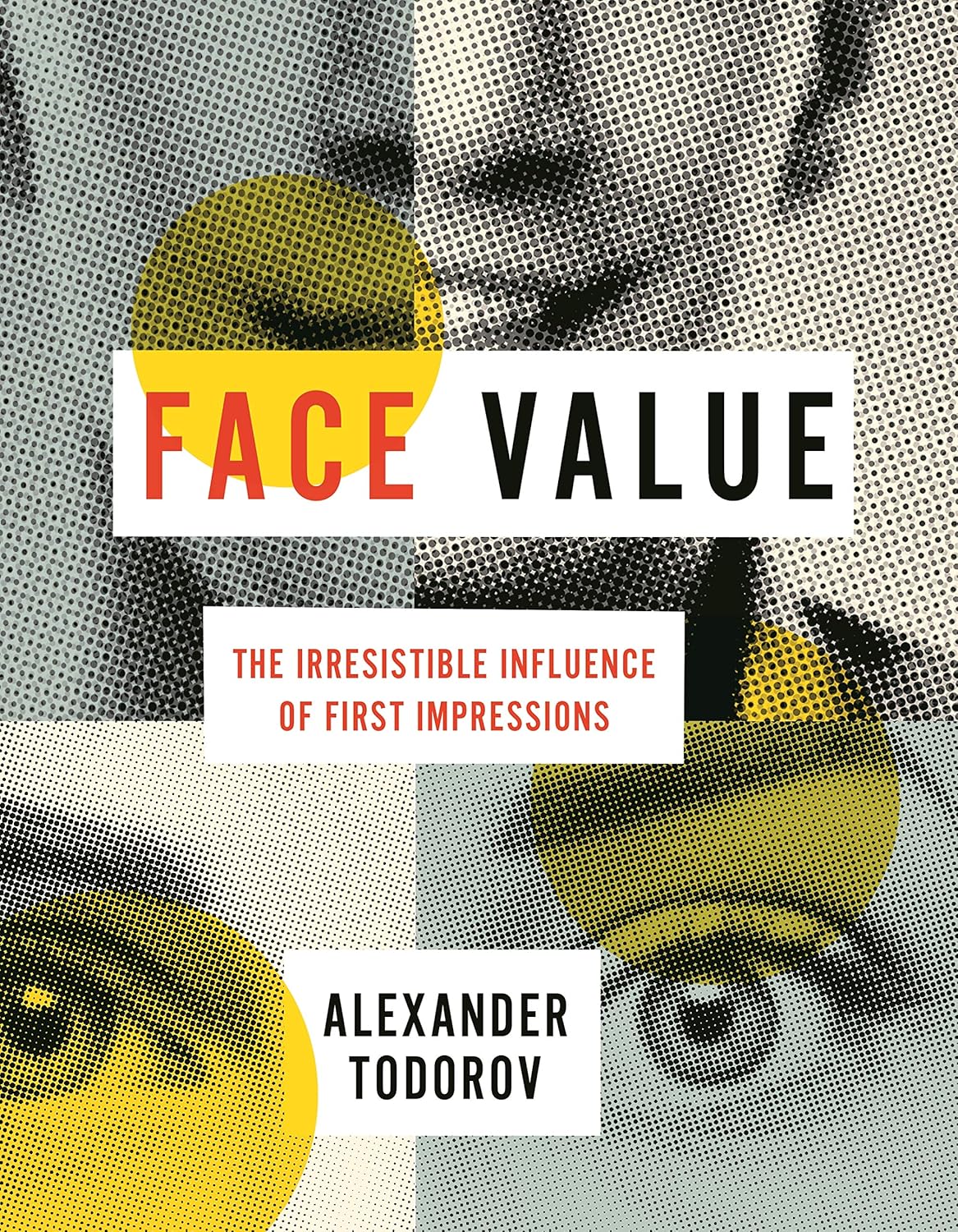The scientific story of first impressions—and why the snap character judgments we make from faces are irresistible but usually incorrect
We make up our minds about others after seeing their faces for a fraction of a second—and these snap judgments predict all kinds of important decisions. For example, politicians who simply look more competent are more likely to win elections. Yet the character judgments we make from faces are as inaccurate as they are irresistible; in most situations, we would guess more accurately if we ignored faces. So why do we put so much stock in these widely shared impressions? What is their purpose if they are completely unreliable? In this book, Alexander Todorov, one of the world’s leading researchers on the subject, answers these questions as he tells the story of the modern science of first impressions.
Drawing on psychology, cognitive science, neuroscience, computer science, and other fields, this accessible and richly illustrated book describes cutting-edge research and puts it in the context of the history of efforts to read personality from faces. Todorov describes how we have evolved the ability to read basic social signals and momentary emotional states from faces, using a network of brain regions dedicated to the processing of faces. Yet contrary to the nineteenth-century pseudoscience of physiognomy and even some of today’s psychologists, faces don’t provide us a map to the personalities of others. Rather, the impressions we draw from faces reveal a map of our own biases and stereotypes.
A fascinating scientific account of first impressions, Face Value explains why we pay so much attention to faces, why they lead us astray, and what our judgments actually tell us.
Read more









A M –
The book presents three theses about perception (psychology). (1) We assign personality features to people on the basis of their faces (2) These impressions are very inaccurate. (3) Our ability to recognize emotions and unfamiliar people by their faces is much lower than we usually think. The book reviews many experiments about the perception of faces, criticizes several psychological researches and written in an enjoyable style.
Lincoln Admirer –
The influence of appearance coupled with its lack of correlation with anything is disturbing. The appearance of eyebrows and lips do not reliably tell us anything, but we rely on them so heavily to judge people.
Sandy Mclardy –
I really enjoyed how Alex “brings you into the lab” with all his pictures and examples. You get to go on a fascinating journey into the world of psychology without having years of training and experience in the field.
I thought he might get into race and racism. His work will probably influence how future ethnologist/anthropologist explore issues of racial tension. but the book goes deeper and takes a look on an elemental level into how we develop impressions from the day we are born. It’s like looking into the gears of a clock. It is fascinating but also very useful and educational. It will change how I give or take interviews!
Yes I recommend this book.
Cheers.
Sandy
Siobhan Stapleton –
At times a little technical but overall a fascinating book which refutes a lot of basic assumptions. We are none of us as good at reading faces as we think.
Thiago –
Livro espetacular e entrega feita exatamente no dia programado.
S. Keenan –
I’m certain this is a very inclusive work of knowledge, but I found most of it very boring and laborious to get through. I didn’t want such a clinical book I guess.
teresa farroni –
Han tardado más de lo indicado sin avisar para nada.
Aunque el libro está bien
K and J Vaughn –
I’m losing sleep — and loving it.
Last night I was exhausted, crawled into bed very late, opened Face Value for the first time and assumed I’d read the first few pages before I nodded off.
No such luck.
Every page-turn begged for another and another … and with each page, I woke up a little more. At page 52 I forced myself to put it down … got three hours of sleep, and now I’m reading again. But I thought I’d take a moment to write this review.
I absolutely agree with Roger Dooley’s review. If you are truly interested in making a great first impression on everyone you meet, this book is for you. It is not some fluff-book about body language filled with hyperbole and made-up silliness, written by a motivational speaker. Professor Todorov is writing about science — noting actual scientific and neuroscientific studies that underscore his assertions. But he is also writing with wonderful prose and wit. And as Mr. Dooley’s review pointed out, Face Value is beautifully illustrated, making his points as clear as Perrier, with is to say, perfectly clear … with a bit of added sparkle.
If you liked Malcolm Gladwell’s, Blink, and Daniel Kahneman’s, Thinking Fast and Slow, which Professor Todorov references, you’ll love what you’ll learn in this book. In Blink, Gladwell made it clear how quickly first impressions are formed, and in Thinking Fast and Slow, Kahneman detailed the neuroscience behind how those lighting-fast impressions are formed. Those things are great to know. But Todorov goes further by showing you the specifics about why others judge us in terms of trustworthiness and a host of other character traits — in fractions of a second. That is information that’s truly powerful and can absolutely improve the way other’s view and judge you.
I’ll add to this review when I’ve finished the book, but I’m a methodical reader — stopping to take notes — so don’t wait for me; buy this book today.
Judson Vaughn
Charle M. –
Wonderful overview of important perceptual processes related to human face.
Charles L Mauro CHFP
President / CEO
Mauro Usability Science
Roger Dooley –
Everybody talks about first impressions, but Face Value backs up the advice with real science. I’ve been following Alexander Todorov’s research for years, and nobody has done more to advance our understanding of how people make snap judgments about other people. Like it or not, people form first impressions in a tiny fraction of a second based on superficial factors like appearance and expression. These first impressions may not be accurate, but they can be long-lasting.
Todorov provides many illustrations showing the various facial characteristics that create good and bad first impressions. From a very practical standpoint, this information can help you select photos to represent you on social media or in other contexts. Small differences can make you seem more trustworthy, more likable, and more intelligent.
The good news is that although some of your facial features are determined by your genes, you can control many others – your expression, your hair style, etc. We all have plenty of control over that all-important first impression.
Years ago, first impressions were all about in-person factors – your body language, your clothes, and your handshake, for example. Today, your first impression will almost certainly be electronic. If you want to be sure your photos represent the real you, or even a better you, read Face Value.
rcavesta –
Splendido libro! Domande ovvie ma ancora senza risposte ti faranno entrare nel mondo magico della complessa interazione umana fin dalla nascita
Thiago –
El libro explica en detalle los experimentos. Las conclusiones son interesantes pero es un libro para academicos
Alexander –
The book is shallow. 300 pages and nothing new or interesting. For me, of course.